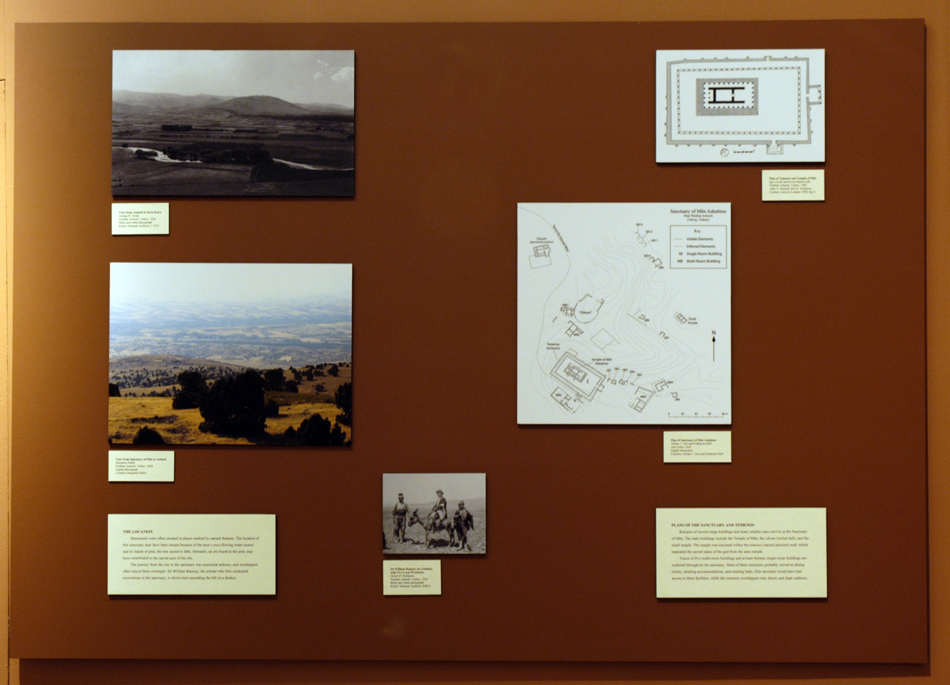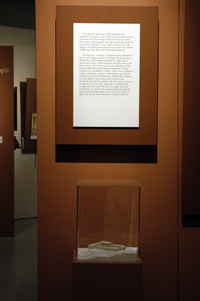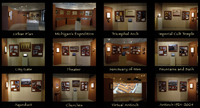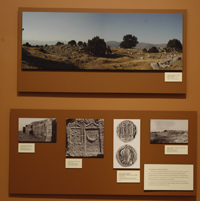
Duderstadt Gallery: Section 7 - Sanctuary of Men Askaenos
(Click on images in the large image below
to view)

THE LOCATION
Sanctuaries were often situated in places marked by natural features.
The location of this sanctuary may have been chosen because of the area’s
once-flowing water source and its stands of pine, the tree sacred to Mên.
Hematite, an ore found in the area, may have contributed to the sacred
aura of the site.
The journey from the city to the sanctuary was somewhat arduous, and worshippers
often stayed there overnight. Sir William Ramsay, the scholar who first
conducted excavations in the sanctuary, is shown here ascending the hill
on a donkey.
PLANS OF THE SANCTUARY AND TEMENOS
Remains of several large buildings and many smaller ones survive at the
Sanctuary of Mên. The main buildings include the Temple of Mên,
the odeum (recital hall), and the small temple. The temple was enclosed
within the temenos (sacred precinct) wall, which separated the sacred
space of the god from the area outside.
Traces of five multi-room buildings and at least thirteen single-room
buildings are scattered throughout the sanctuary. Most of these structures
probably served as dining rooms, sleeping accommodations, and meeting
halls. Elite devotees would have had access to these facilities, while
the common worshippers met, dined, and slept outdoors.
February 18, 2006
Digital Image
Courtesy of J. Matthew Harrington



